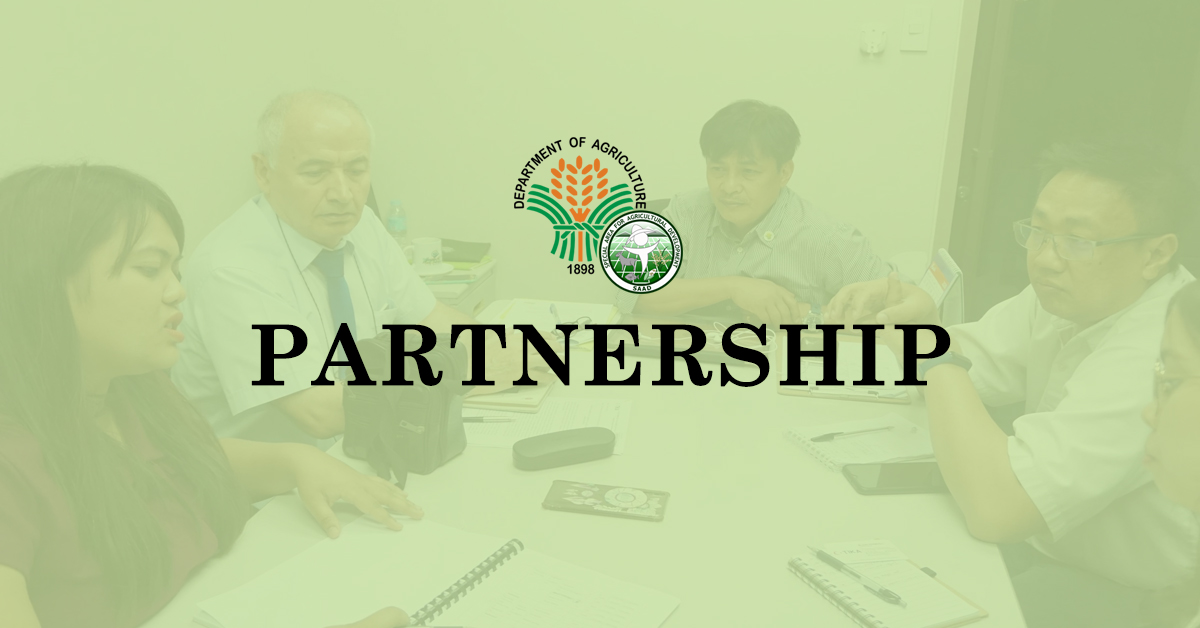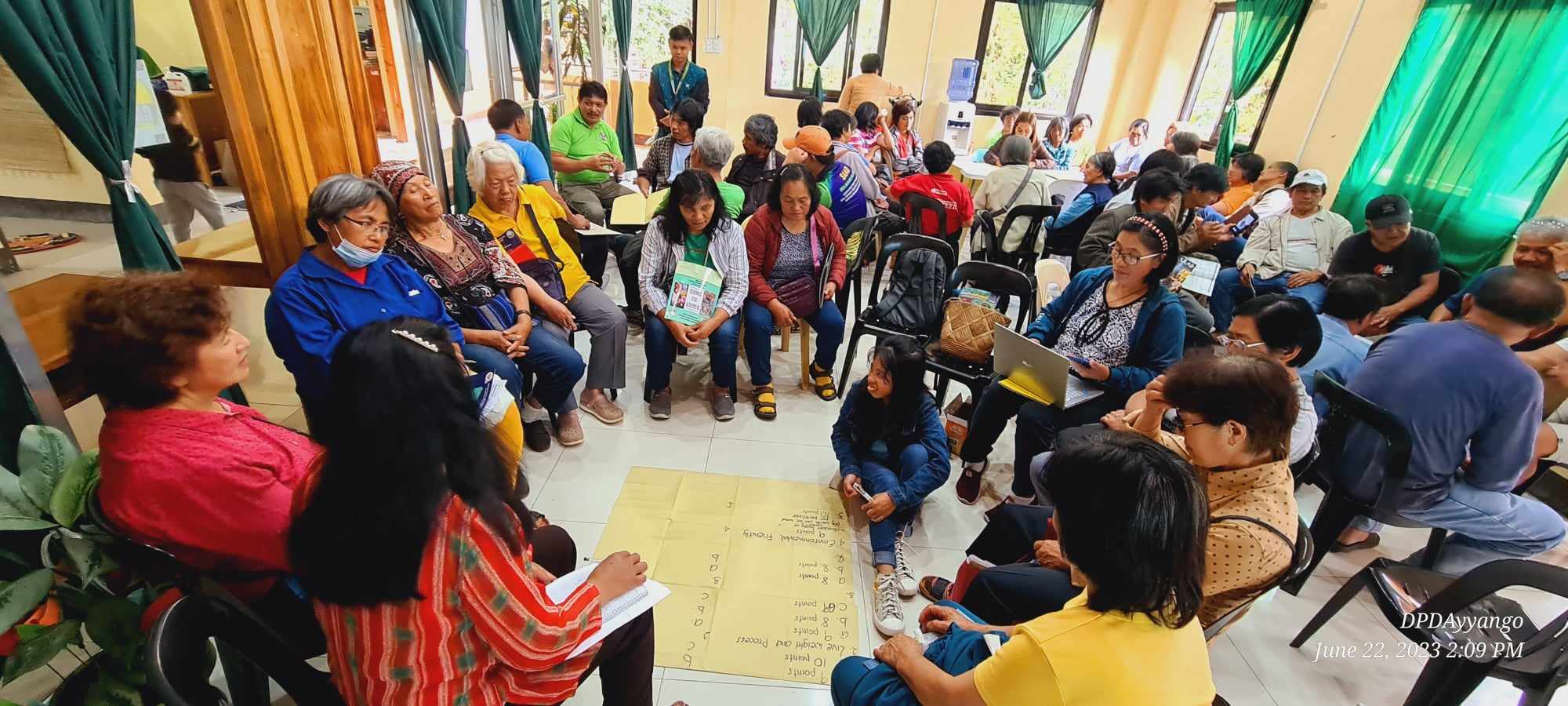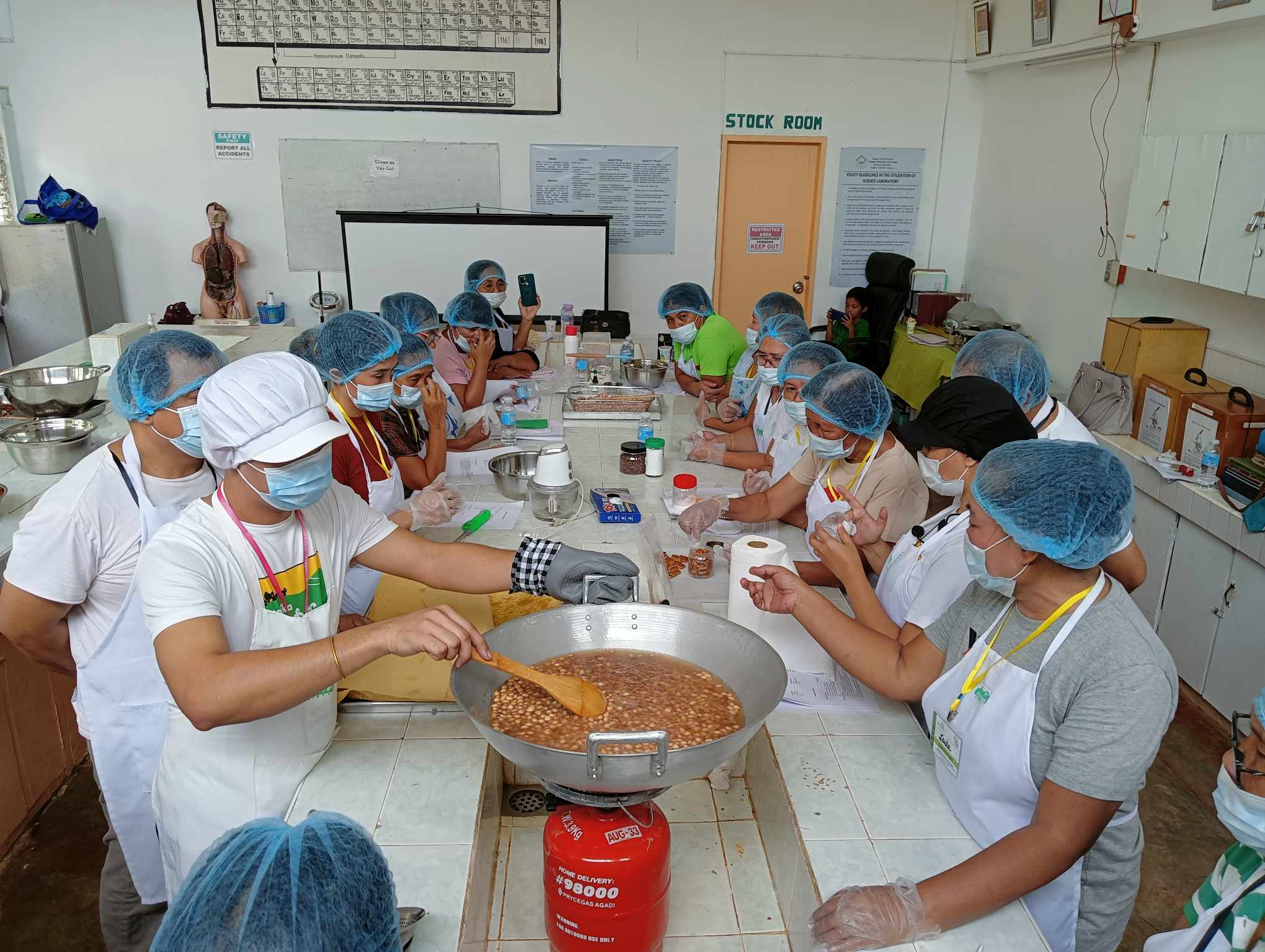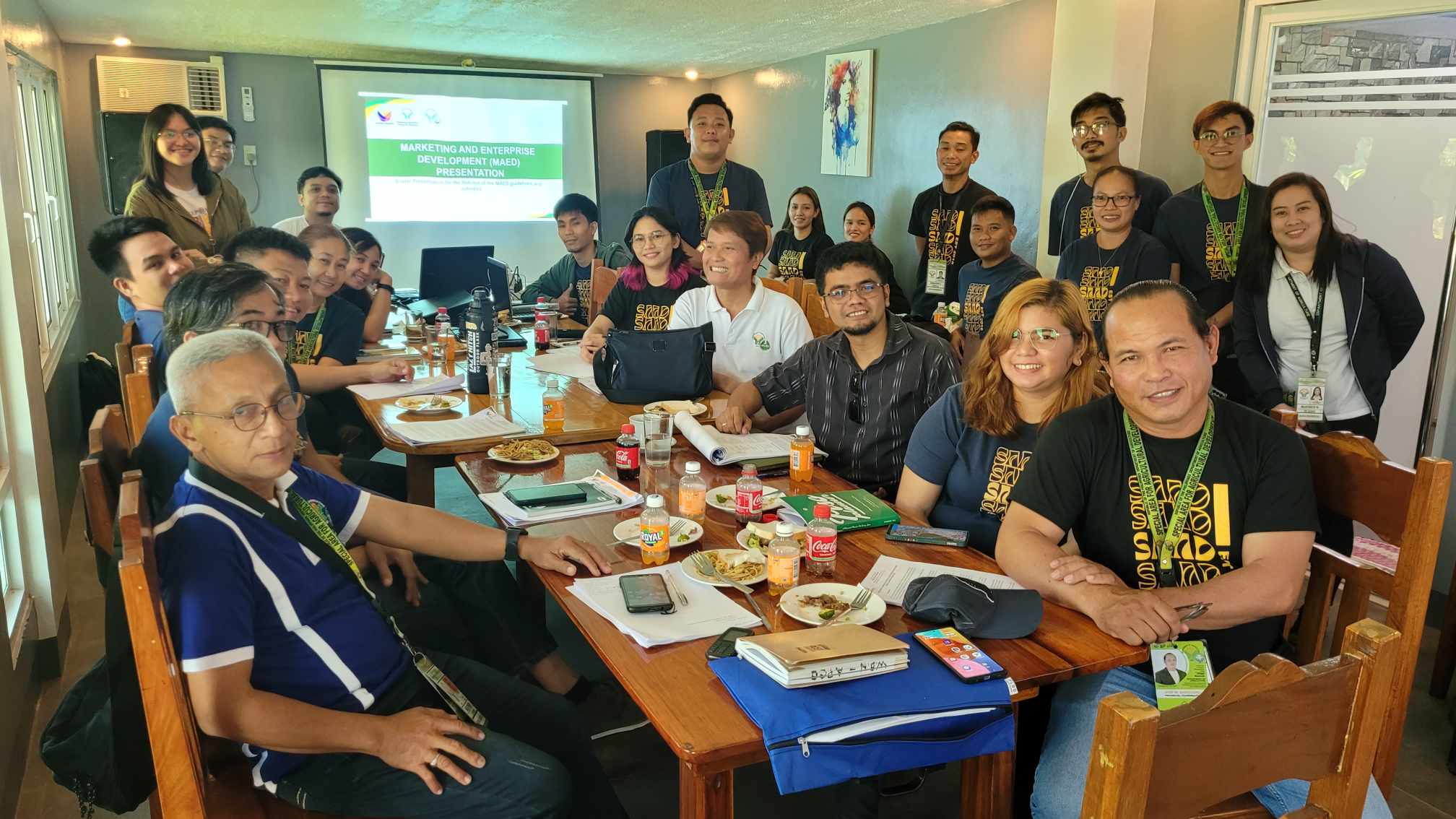Partnership is an essential tool of any poverty reduction project such as the Special Area for Agricultural Development (SAAD) Program of the Department of Agriculture (DA).
What is partnership? It is “a relationship between individuals or groups that is characterized by mutual cooperation and responsibility, as for the achievement of a specified goal”.1
The SAAD’s goal is to contribute in the reduction of poverty incidence of beneficiaries in its thirty (30) poorest of the poor covered provinces.
The SAAD cannot do this alone and thus, partnership is essential. This is why the SAAD has been initiating and establishing partnerships with all stakeholders which include its farmers and fisherfolk beneficiaries and the concerned local government units.
Over the years, from 2017 to date, its other partners are:
- Non-government organizations, such as cooperatives. Cooperatives can help in the sustainability of a SAAD livelihood project because they already have capacities in organization development, financial literacy, and marketing.
- State Universities and Colleges (SUCs), such as the University of the Philippines (UP). SUCs can provide technical assistance in areas such as technology training and project evaluation, among others.
- National government agencies such as the National Commission on Indigenous Peoples (NCIP) and the Commission on Population (POPCOM). Complementation of interventions can be done with other agencies. This helps make the pooled interventions achieve more impact.
- Other DA units such as the Agricultural Training Institute (ATI), Bureau of Agricultural Research (BAR) and Bureau of Plant Industry (BPI). The expertise of other DA units certainly helps the SAAD. ATI has the expertise in extension services, the BAR on R & D, and the BPI on quality planting materials and crop production systems.
- Private groups such as Go Negosyo. Go Negosyo can assist the SAAD in terms of enterprise development and marketing assistance.
- International agencies such as Turkey Cooperation and Coordination Agency (TIKA) and Food and Agriculture Organization (FAO). Donor agencies can provide additional projects for the beneficiaries as well as technical assistance.
The SAAD is also partnering with member agencies for the Enhanced Partnership Against Hunger and Poverty (EPAHP), for the Human Development and Poverty Reduction Cluster, and for the implementation of Executive Order 70, series of 2018: Institutionalizing the Whole-of-Nation Approach in Attaining Inclusive and Sustainable Peace, Creating a National Task Force to End Local Communist Armed Conflict, and Directing the Adoption of a National Peace Framework.
Partnership is essential because it helps ensure sustainability of projects. Partnerships facilitate the creation of linkages, namely: horizontal, such as farmer-to-farmer; vertical, such as farmer-to-institutional buyers; and support, such as farmer-to-government.2
Partnerships also has a multiplier effect. This is why agencies do “convergence” activities. An example is the SAAD’s policy of assisting Pantawid Pamilyang Pilipino Program (4Ps) beneficiaries of the Department of Social Welfare and Development (DSWD).
Combining agriculture (what SAAD provides) and social protection (such as the interventions given to 4Ps beneficiaries) can produce bigger positive impact to beneficiaries rather than no coordination and complementation. A FAO study (2013) shows that there is evidence that agriculture and social protection support each other through direct and indirect impacts on farm production as well as on vulnerability reduction and income-generating capabilities.3
This shows that the SAAD, and other poverty reduction projects, should initiate and continue to forge partnerships with other change agents.
There is a saying that goes: “There’s more than one way to skin a cat.” We can similarly say that there are many ways to fight poverty. However, we should take note that there is only one cat (poverty).
Thus, we can be more effective if we combine our scarce resources to fight poverty together as partners. ###
Writer: Ulysses J. Lustria, Jr., SAAD Program Deputy Director
References:
- (n.d.). In YourDictionary. Retrieved from https://www.yourdictionary.com/partnership
- Gregorio, G.B., R.V. Vicerra, R.C. Ancog, N.M. P. Billedo, R.A. Paller, M.C.G. Corales, and I. L. Batangantang. (2020). “Agricultural clusters approach to enhance competitiveness of smallholder farms in Southeast Asia.” SEARCA Policy Paper 2020-2. Retrieved from https://www.searca.org/pubs/briefs-notes?pid=471
- Tirivayi, N., M. Knowles, and B. Davis. (2013). The interaction between social protection and agriculture. A review of evidence. Food and Agriculture Organization of the United Nations. Retrieved from http://www.fao.org/3/a-i3563e.pdf





This Post Has 0 Comments